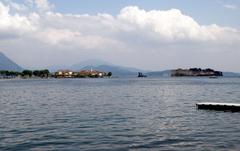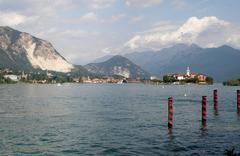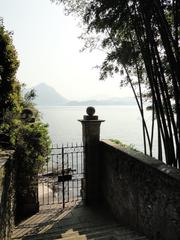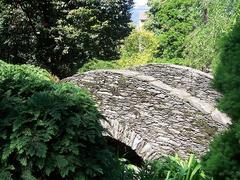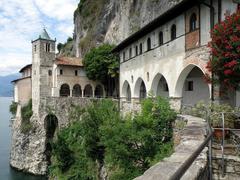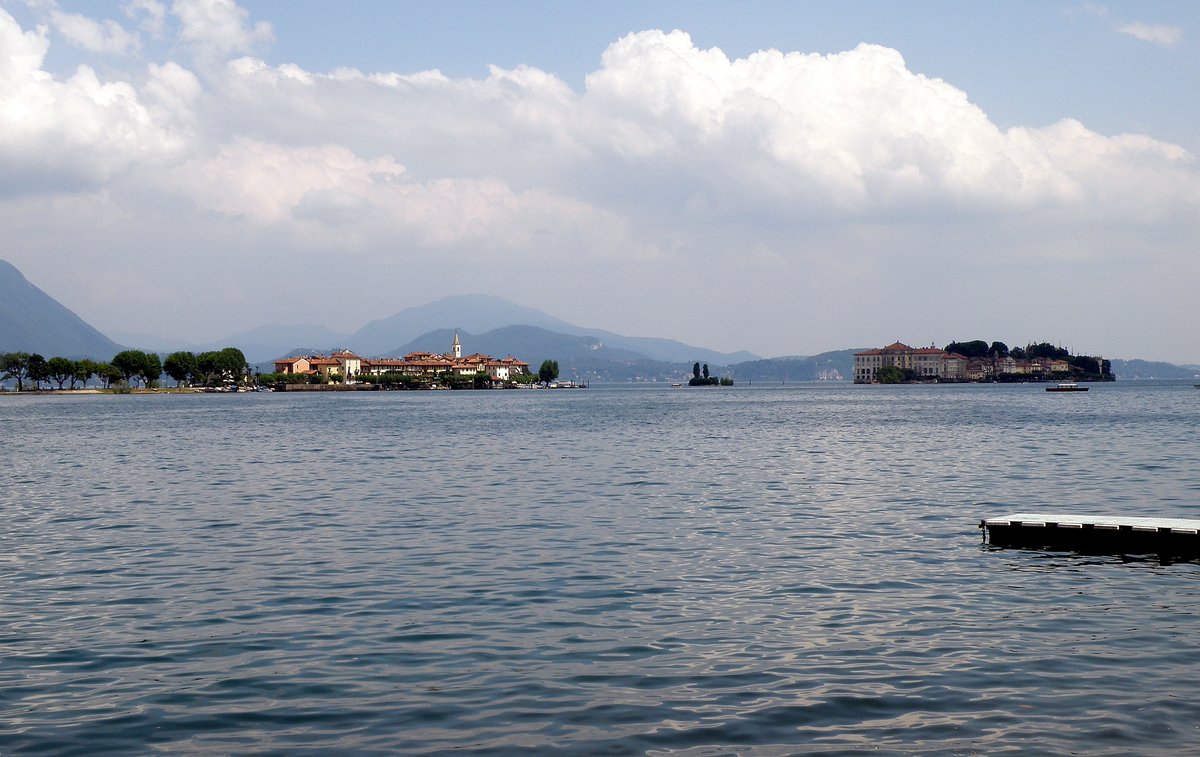
Visiting Palazzo Borromeo: Tickets, Hours, and Tips
Date: 20/07/2024
Introduction
Palazzo Borromeo, an architectural gem nestled on Isola Bella in Lake Maggiore, Stresa, Italy, stands as a testament to the opulence and cultural patronage of the Borromeo family. This baroque masterpiece, initiated in 1632 by Carlo III Borromeo and dedicated to his wife, Isabella D’Adda, has evolved over centuries into one of Italy’s most iconic historical sites. With its dramatic use of space, light, and ornamentation, the palace exemplifies the grandeur of baroque architecture, featuring contributions from renowned architects like Angelo Crivelli, Francesco Maria Richini, and Carlo Fontana. The Borromeo family’s influence, extending through strategic marriages and alliances, is palpable in the palace’s extensive art collections and its role as a cultural hub hosting dignitaries, royalty, and significant political events. This guide aims to provide a comprehensive overview of Palazzo Borromeo’s history, visitor information, and travel tips to ensure a memorable visit to this historical landmark (Borromeo Islands website).
Table of Contents
- Introduction
- History of Palazzo Borromeo
- Visitor Information
- The Gardens of Isola Bella
- Nearby Attractions
- Travel Tips
- Special Events and Tours
- Photographic Spots
- FAQ
- Conclusion
- References
History of Palazzo Borromeo
Origins and Early History
Palazzo Borromeo, located on Isola Bella in Lake Maggiore, Italy, is a testament to the grandeur and influence of the Borromeo family. The construction of the palace began in 1632 under the direction of Carlo III Borromeo, who envisioned transforming the rocky island into a magnificent residence dedicated to his wife, Isabella D’Adda. The project was initially overseen by the Milanese architect Angelo Crivelli, who laid the foundation for what would become one of the most opulent baroque structures in Italy.
Architectural Evolution
The architectural evolution of Palazzo Borromeo spanned several decades, with contributions from various architects and artists. The initial phase of construction focused on the central building and the creation of the terraced gardens. The design was heavily influenced by the baroque style, characterized by its dramatic use of space, light, and ornamentation. Notable architects such as Francesco Maria Richini and Carlo Fontana played significant roles in the palace’s development. Richini, known for his work on the Milan Cathedral, contributed to the palace’s grand façade, while Fontana, a prominent Roman architect, added intricate details to the interior spaces.
The Borromeo Family’s Influence
The Borromeo family, originally from Florence, rose to prominence in the 15th century through strategic marriages and alliances. Their influence extended across Italy and Europe, with members of the family holding significant positions in the Catholic Church and the political sphere. The construction of Palazzo Borromeo was not only a display of wealth but also a symbol of the family’s power and cultural patronage. The palace hosted numerous dignitaries and royalty, including Napoleon Bonaparte and his wife Josephine, who visited in 1797.
Artistic Contributions
Palazzo Borromeo is renowned for its extensive collection of art and decorative elements. The palace’s interior is adorned with frescoes, tapestries, and sculptures created by some of the most celebrated artists of the time. The Sala di Napoleone, named after Napoleon’s visit, features a stunning ceiling fresco by Carlo Innocenzo Carlone, depicting the Triumph of the Borromeo Family. The Galleria Berthier, another highlight, houses over 130 paintings, including works by Titian, Raphael, and Correggio. These artistic contributions not only enhance the palace’s aesthetic appeal but also reflect the Borromeo family’s commitment to the arts.
Visitor Information
Ticket Prices
Tickets for Palazzo Borromeo can be purchased at the entrance or online through the official Borromeo Islands website. Prices vary depending on the season and whether you opt for a guided tour.
Opening Hours
Palazzo Borromeo is open to the public from March to October. The visiting hours are typically from 9:00 AM to 5:30 PM, but it is advisable to check the website for any changes or special events that might affect the schedule.
How to Get There
Isola Bella is accessible by ferry from several locations around Lake Maggiore, including Stresa, Verbania, and Laveno. The ferries run frequently during the tourist season, making it easy to plan your visit.
Accessibility
While the main areas of Palazzo Borromeo are accessible, some sections of the gardens may present challenges for visitors with mobility issues. It is recommended to contact the staff in advance for specific accessibility information.
The Gardens of Isola Bella
The gardens of Isola Bella are an integral part of Palazzo Borromeo’s history and allure. Designed in the Italianate style, the gardens feature ten terraces adorned with statues, fountains, and exotic plants. The Teatro Massimo, a grand amphitheater-like structure, serves as the focal point of the gardens. It is adorned with statues representing the four elements and the seasons, symbolizing the harmony between nature and art. The gardens were designed to complement the palace’s architecture, creating a seamless blend of indoor and outdoor spaces.
Nearby Attractions
While visiting Lake Maggiore, consider exploring other historical sites and attractions such as the Rocca Borromeo di Angera, the Borromean Islands, and the charming town of Stresa. Each location offers a unique glimpse into the region’s rich cultural heritage.
Travel Tips
Best Times to Visit
The best time to visit Palazzo Borromeo is during the spring and early summer when the gardens are in full bloom. Early morning or late afternoon visits are recommended to avoid the crowds.
What to Bring
Comfortable walking shoes, a camera, and a bottle of water are essential for a day of exploring Palazzo Borromeo and its gardens. Don’t forget to bring sun protection, especially during the warmer months.
Special Events and Tours
Guided Tours
Guided tours are available and can be booked in advance through the official website. These tours offer in-depth insights into the history, architecture, and art collections of Palazzo Borromeo.
Annual Events
Palazzo Borromeo hosts several annual events, including art exhibitions, concerts, and cultural festivals. Check the website for the latest schedule and event details.
Photographic Spots
The gardens, terraces, and ornate interiors of Palazzo Borromeo provide numerous opportunities for stunning photographs. Some of the best spots include the Teatro Massimo, the terraces overlooking Lake Maggiore, and the Sala di Napoleone.
FAQ
Q: What are the opening hours for Palazzo Borromeo? A: The palace is open from 9:00 AM to 5:30 PM from March to October.
Q: How much are the tickets? A: Ticket prices vary by season and tour options. Check the official website for current rates.
Q: How can I get to Isola Bella? A: Ferries run frequently from various locations around Lake Maggiore, including Stresa, Verbania, and Laveno.
Q: Are the gardens wheelchair accessible? A: Some areas may be challenging for visitors with mobility issues. Contact the staff for detailed accessibility information.
Conclusion
Palazzo Borromeo on Isola Bella is not just a historical site but a living testament to the opulence and cultural patronage of the Borromeo family. From its stunning baroque architecture to its lush gardens, the palace offers a unique glimpse into Italy’s rich heritage. Plan your visit today to experience the grandeur and beauty of this magnificent estate.
References
- Exploring Palazzo Borromeo - History, Visiting Hours, and Tickets on Isola Bella, 2024, Author Borromeo Islands website
- Visiting Palazzo Borromeo - History, Tickets, and Travel Tips for Stresa’s Iconic Landmark, 2024, Author Borromeo Islands website
- Ultimate Guide to Visiting Palazzo Borromeo in Stresa - Hours, Tickets, and Tips, 2024, Author Borromeo Islands website
